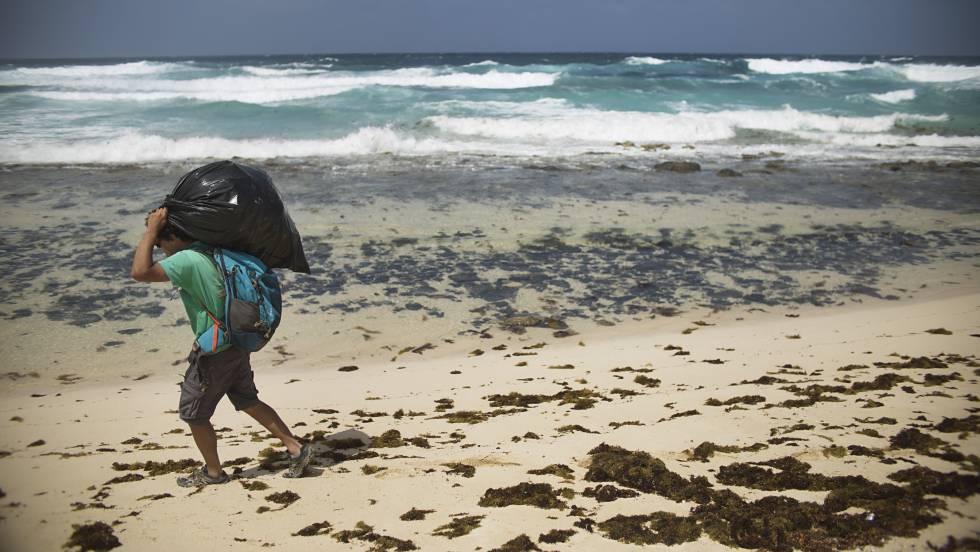The newspaper El Pais collects a report on the danger that runs the Amber beach in La Graciosa that is being “attacked” by plastics and microplastics that are confused with the sand, coming from many parts of the world. “We only take the largest pieces of plastic before they decompose with the sun,” explains Alexis Rivera, a biologist and technician at the environmental organization WWF in the Canary Islands.
Rivera goes every Thursday for three months, which lasts the WWF volunteer campaign and fills a bag, mostly plastics as if it were the first time they do this action. Boats, containers, cigarette butts, combs, plastic bottles, fishing nets … “The plastics come from latitudes further north, from southern Europe, from North Africa and, even, they come from America driven by currents” , Rivera explains.
The Amber beach – in many maps it also appears named Lambra – has always been a place of arrival. It is northeast of La Graciosa, which in turn is north of the Canaries. This orientation – which exposes it to the currents and winds from the north – turns La Graciosa – and this beach – into the prow of the archipelago. “Here comes the garbage of the planet,” regrets Rivera.
But waste did not always arrive until the Eighth Island. The English traveler George Glas already referred to this “small sandy bay” in a book about the Canaries published in 1764. “In the northern part of the uninhabited island of La Graciosa there is a small sandy bay, called by the country of the Amber beach, where sometimes a very good species of ambergris is found, in a way similar to a pear, “wrote this traveler. Ambergris is a precious (and very expensive) secretion that generates the digestive system of sperm whales and that the currents end up taking to the coasts and beaches like this one of La Graciosa.





